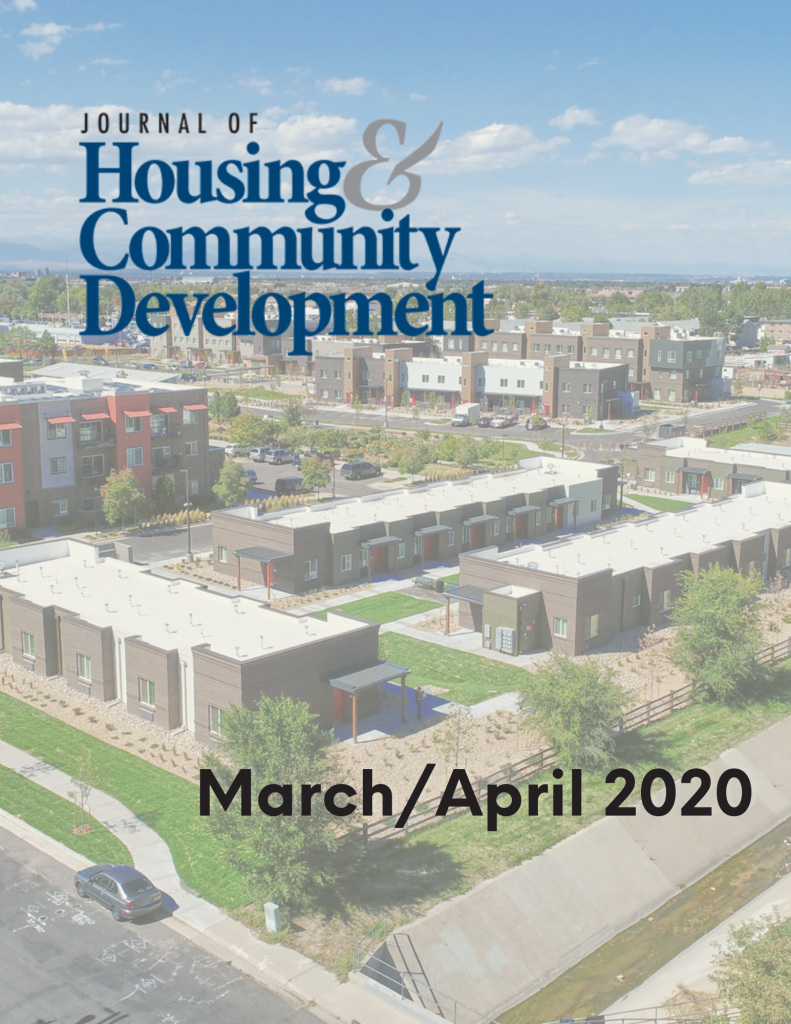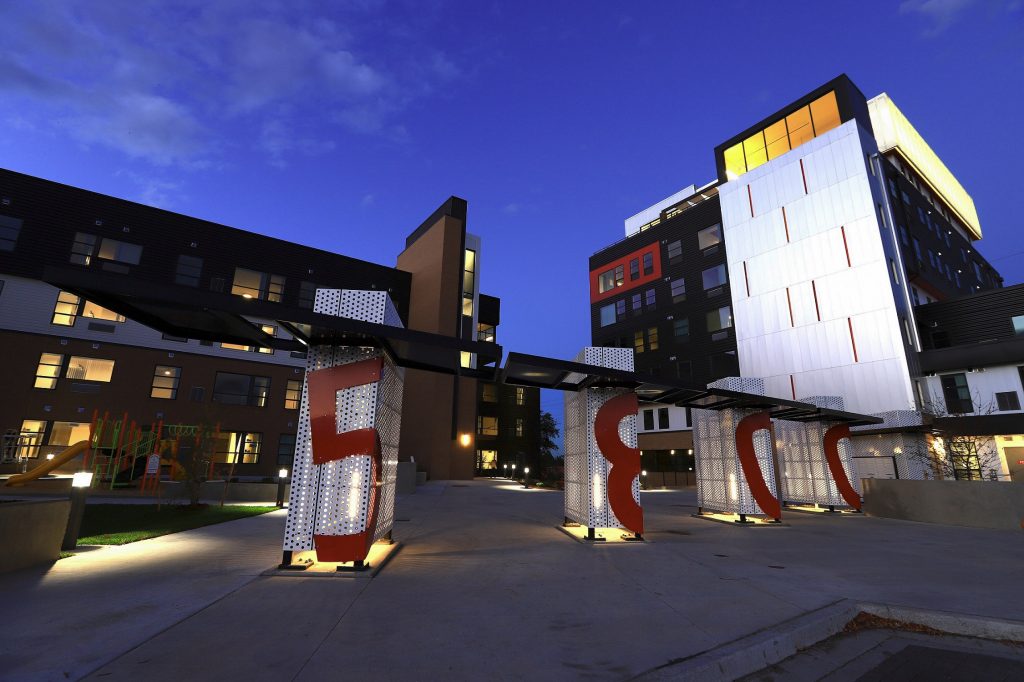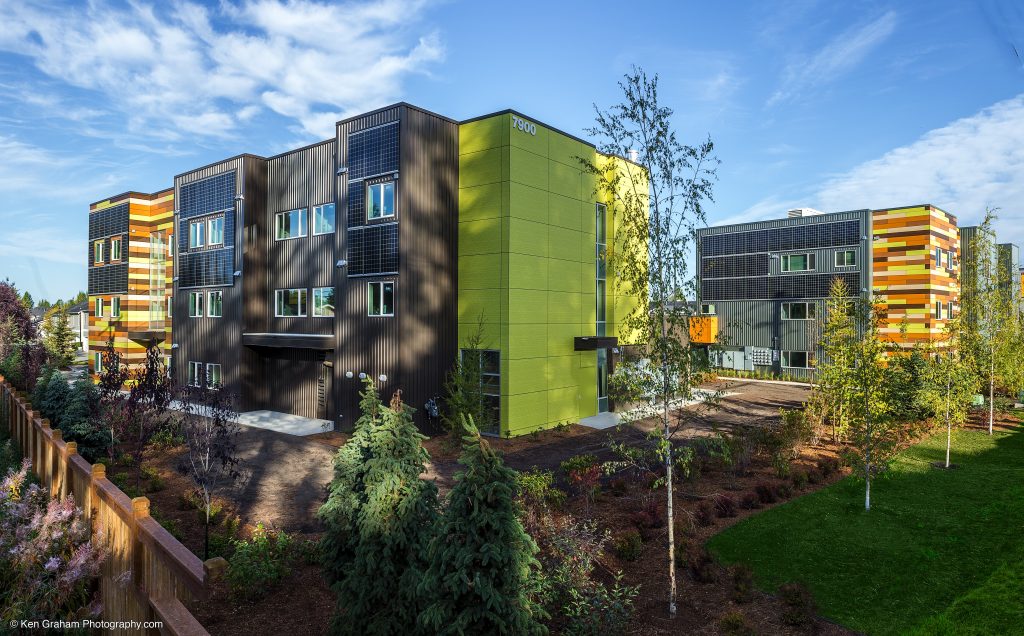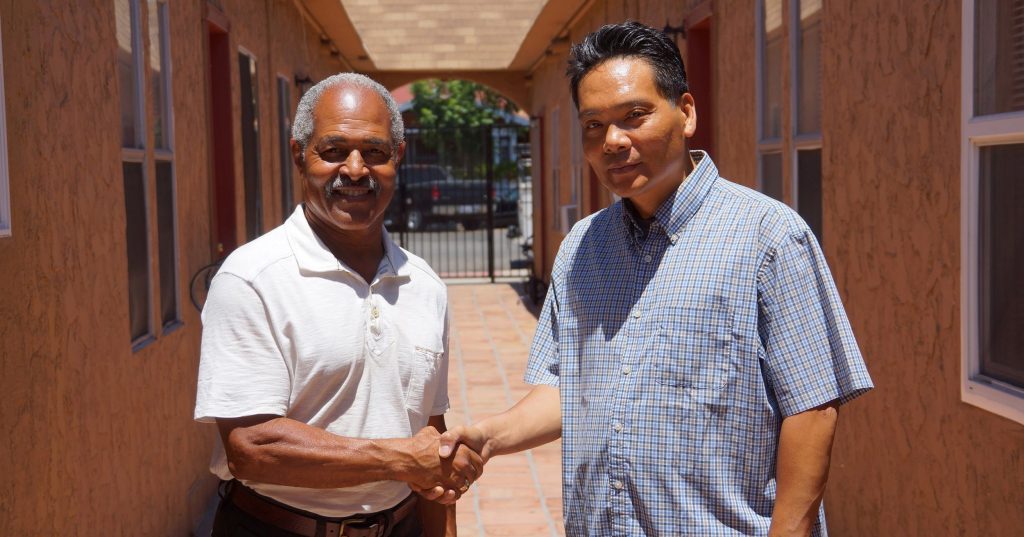Pairing Housing and Public Transit: Developing a Community With Mobility in Mind
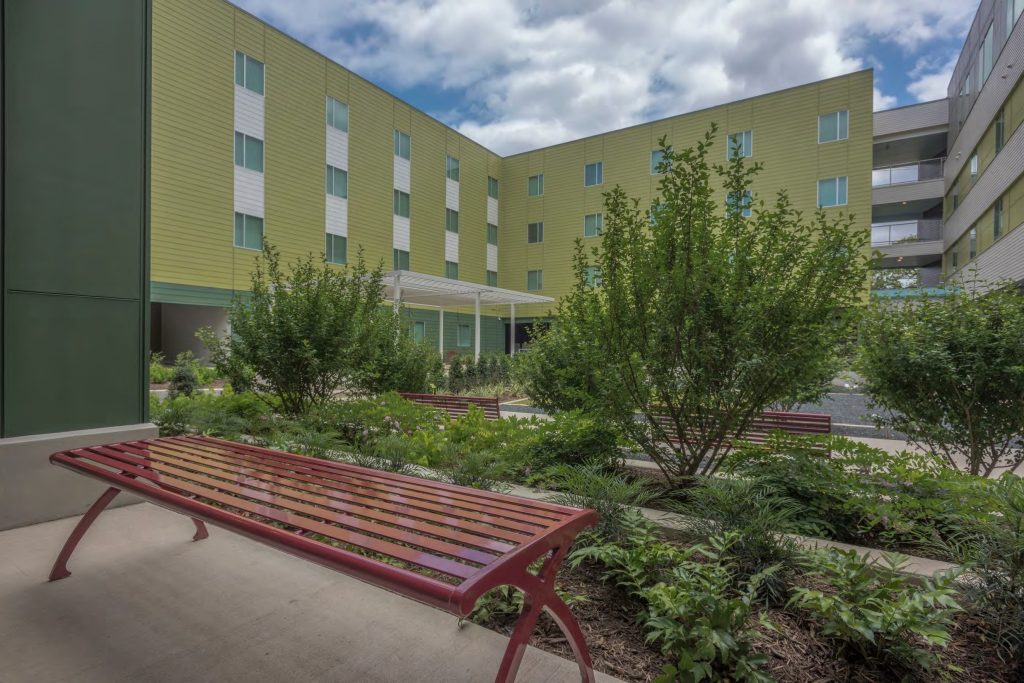
New Hope Housing wins a 2019 Award of Excellence in Affordable Housing for developing its first mixed-use transit-oriented development in Houston, Texas. Nominated from among the NAHRO Award of Merit winners each year, the Awards of Excellence winners are chosen by national juries and honored at the annual National Conference and Exhibition in October. They represent the very best in innovative programs in assisted housing and community development.
Since its founding more than 25 years ago, New Hope Housing has helped provide nearly 9,000 men, women and children with high-quality, affordable housing and access to support services. More than 50 percent of New Hope residents are formerly homeless, and almost 60 percent have a physical or cognitive disability; their monthly incomes typically do not exceed $800. New Hope residents include veterans, the elderly, the chronically ill, part-time students, individuals with cognitive and physical impairments, overcoming substance abuse, and the formerly homeless.
As the number of people in need of safe, decent, affordable housing grows, New Hope created a formula for alleviating homelessness by building healthy communities and working with collaborative partners to develop a model of excellence in housing and supportive services. Harrisburg is New Hope’s seventh tax credit development, and its first mixed-use, transit-oriented development. It offers 175 permanent affordable, single-room occupancy (SRO) studio apartments, plus 5,000 square feet of community space for life-enhancing programs. Each studio apartment is fully furnished and includes a microwave, refrigerator and private bath. All shared spaces are located on the ground floor and include a business center, social service offices, library, training room, kitchen, dining area, theatre room, and a food pantry.
Harrisburg also includes 4,000 square feet for retail and 7,000 square feet of office space. New Hope also moved its corporate office into the Harrisburg office space when the building opened in April 2018. In addition, New Hope committed to activating the streetscape by developing the more than 4,000 square feet of retail space along Harrisburg Blvd., adjacent to the Metro light rail.
Harrisburg helps shatter stereotypes of low-income, single room occupancy (SRO) housing, proving that it can be both visually attractive and affordable. Studies show that if a new, visually appealing development replaces a blighted property or houses local homeless individuals, it is highly likely to positively impact property values and encourages additional development. By offering affordable, beautiful housing to adults living alone and on extremely limited incomes, Harrisburg has helped people mend their lives and recover with dignity.
Harrisburg is also New Hope’s first property to be designed using the VRF (Variable Refrigerant Flow) system for HVAC rather than PTAC (Packaged Terminal Air Conditioner) units. The VRF system is the most efficient HVAC system available on the market, and monitors the heating and cooling needs in a building on a unit-by-unit basis; it can pull heat out of one room to reduce the temperature and flow the heated refrigerant to a room that needs to be warmed. While the system’s initial costs were high, it is sustainable, saves cost over time, and saves on building operating expenses by being much less labor-intensive.
In addition to being an attractive property, Harrisburg offers a supportive environment that helps residents stabilize their lives. New Hope also is firm in their belief that affordable housing combined with access to services is a form of health intervention, and that architecture can have a profound effect on the human spirit. Using innovative housing as a platform to deliver essential services, New Hope offers its residents:
- Life skills courses, including nutrition classes and health fairs;
- Facilitation of ongoing health care delivery; and
- Access to case management.
- These services help residents form a pathway to a healthier lifestyle.
The total development cost of Harrisburg was $27.3 million. The project’s financing structure was made possible in part by Housing Tax Credit Equity allocated through the Texas Department of Housing & Community Affairs (TDHCA) and investments by BBVA Compass Bank through the National Equity Fund, Inc. The City of Houston also invested HOME dollars and local homeless bond funds. Additional contributions from private foundations, corporations, and individuals resulted in a successful collaboration of public and private funding.
Harrisburg’s rental stream supports the building operating costs and a long-term maintenance reserve, and continues New Hope’s proven model for developing debt-free properties that operate in the black. Due to its financing structure and the land use restriction agreement in place, government monies are received as a grant, not a loan, and the owner is committed to offering affordable housing for 40 years, regardless of ownership. This arrangement ensures that entities do not move into a neighborhood and renovate and resell the property for a profit.
The Harrisburg development had a positive economic impact on the city of Houston, the neighborhood surrounding the property, and the individuals who live there. Data showed that at New Hope properties over the past three years, 75 percent of residents were stabilized in housing for over six months. With the opening of Harrisburg, New Hope has surpassed its goal of developing and managing 1,000 units of SRO housing, and will continue to develop and operate low-income housing in Houston based on the needs of the community.
More Articles in this Issue
How Public Housing Authorities Are Supporting Vulnerable Residents During COVID-19
The Coronavirus Aid, Relief, and Economic Security (CARES) Act, passed on March 27, authorized approximately $12…From Office Building to Home
Metro West Housing Solutions wins a 2019 Award of Excellence in Affordable Housing for the…Creating an Intergenerational, Affordable Town Center
The Cook Inlet Housing Authority (CIHA) wins a 2019 Award of Excellence in Affordable Housing…Sometimes a Tweet Is All It Takes: An Interview With Casey Pennington
The February 25 Democratic debate in South Carolina marked the first time that a question…Award of Excellence: Housing Our Heroes
The San Diego Housing Commission (SDHC) wins a 2018 Award of Excellence in Affordable Housing for creating…
